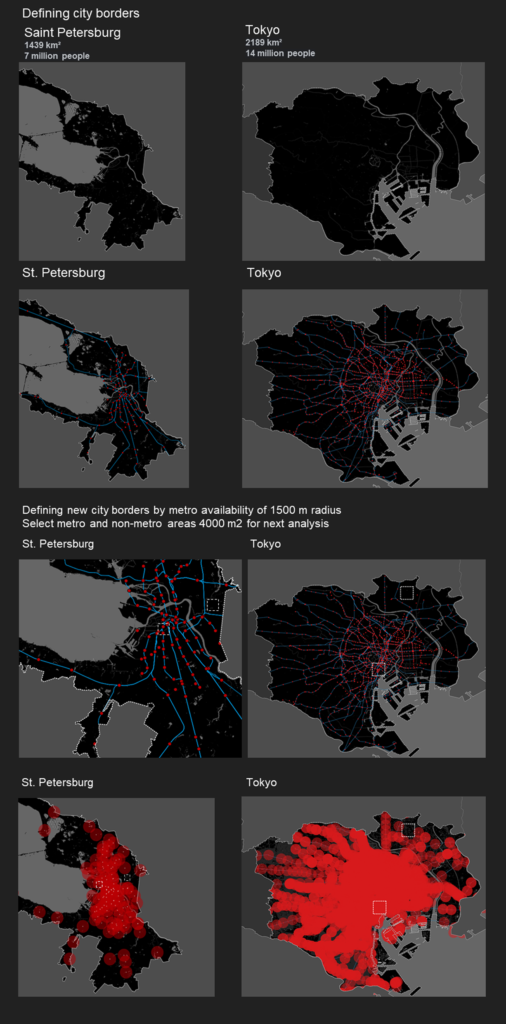Nowadays, almost every city has a metro network. But what does the presence of the metro or subway bring to the city’s fabric?
What can be offered to calm the pace of the metro area or to maintain the dynamics of the city life functioning in non-metro area?

Project Key questions :
? What are the fundamental differences between the environment of one city with and without access to the metro network?
? Metro and the other transportation systems contribute to decentralization? Or accelerate to centralization? What are the pros and cons of life with metro access?
? Does metro area set a new formation of city structure and can we define the new city core and main center borders by metro availability?

Two cities with a well-known and developed metro network were selected for consideration – Saint Petersburg, Russia and Tokyo, Japan. Both cities have administrative borders but what if we draw a border – a buffer area (1.5 km – 15-20 minutes on foot from the access to each metro station) that is the approximate distance that a citizen is willing to walk to the subway without using other transport.

Comparison of the city characteristics :
Above the dotted line there is our cut area 4 km 2 with metro Availability, below it – metro unavailability. Are presented some crucial to our research urban parameters as transport complexity and a rate of public transport diversity and availability, net of attractors, greening and recreational percentages.

As common solution are proposed 2 cities to share their experience in metro and non metro urban development to improve the balance within and in between.

Strategy of urban development expropriation based on metro and non – metro location analysis between 2 cities to create optimal resilient environment.


